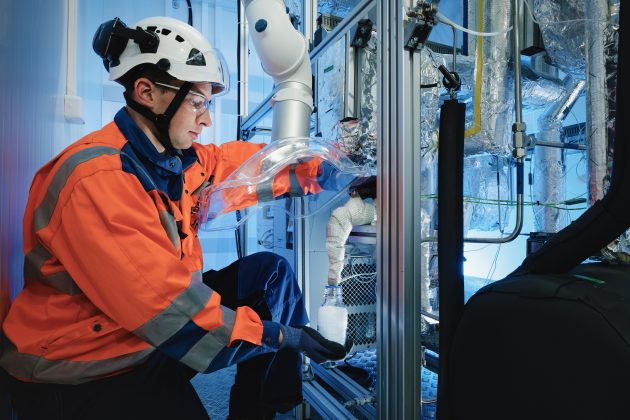
VTT and its business partners have launched a two-year project to develop a concept for a process to capture and utilize carbon dioxide, the aim of utilizing the carbon dioxide produced during bioenergy production as a raw material for speciality chemicals.
As certain end products have a long lifecycle, the concept may even lead to negative emissions, that is, products that act as carbon sinks.
“Polyurethane products are increasingly being used in construction industry insulation in the global markets, so it’s important that the fossil raw materials used in these products are replaced by bio-based and recycled materials, both as part of the Finnish chemical industry’s sustainability targets and to strengthen its market position,” says Henri Nieminen from Finnfoam.
Carbon dioxide can be captured both from the thin air and from processes at power plants and production facilities. It can be used to replace fossil fuels as a raw material in manufacturing numerous chemical products. VTT has previously evaluated that facilities that utilize and process biomass could be suitable pioneers for viable carbon dioxide capture.
Although captured carbon dioxide has been studied often as a raw material for transport fuels, extremely affordable electrical energy would usually be required to make these synthetic fuels viable. For the BECCU project, VTT and its business partners have selected chemicals, and in particular polyols, as the primary end products. Polyols are in turn the raw materials for polyurethane products, such as insulation materials and foam adhesives.
“At Neste, we’re seeking solutions to reduce carbon dioxide emissions by 20 million tons per year by 2030. In order to achieve this ambitious goal, we’re continually developing sustainable fuels and circular economy solutions. We’re involved in BECCU, because this project seeks possibilities for turning carbon dioxide from a problem into an opportunity,” says Neste’s Lars Peter Lindfors, senior vice president, innovation.
The goal is to determine whether polyols can be profitably manufactured from bio-based carbon dioxide and hydrogen in the current market situation. The project is developing a concept for the entire processing chain, from the use of biomass in energy production all the way to the capturing of carbon dioxide and chemical manufacture. The aim is to prepare this concept to the next point where industrial-scale investments can be targeted.

VTT’s mobile synthesis unit MOBSU for bench-scale process development. (Photo by COMSYN-project)
“Valmet’s mission is to convert renewable resources into sustainable results. The concept of capturing biomass-based carbon dioxide for the production of new end products is a good fit with our mission. Achieving climate targets calls for new solutions and verifying them with the whole value chain – and BECCU project is ideally suited for this,” says Ari Kokko, director, technology and R&D, energy business unit, Valmet.
Power-to-X processes to be piloted
The BECCU project will compare a variety of processes to capture carbon dioxide from biomass use in energy production. The second main raw material of polyols – hydrogen – will be produced using renewable electricity or supplied from industrial by-product sources. The team will test each stage of the process using VTT’s pilot and laboratory test equipment and assess the techno-economic requirements for their entire lifecycle.
The concept will also be compared to other Power-to-X concepts, that is, processes in which transport fuels and other chemicals, such as methanol and methane, can be produced from carbon dioxide and hydrogen.
Print this page